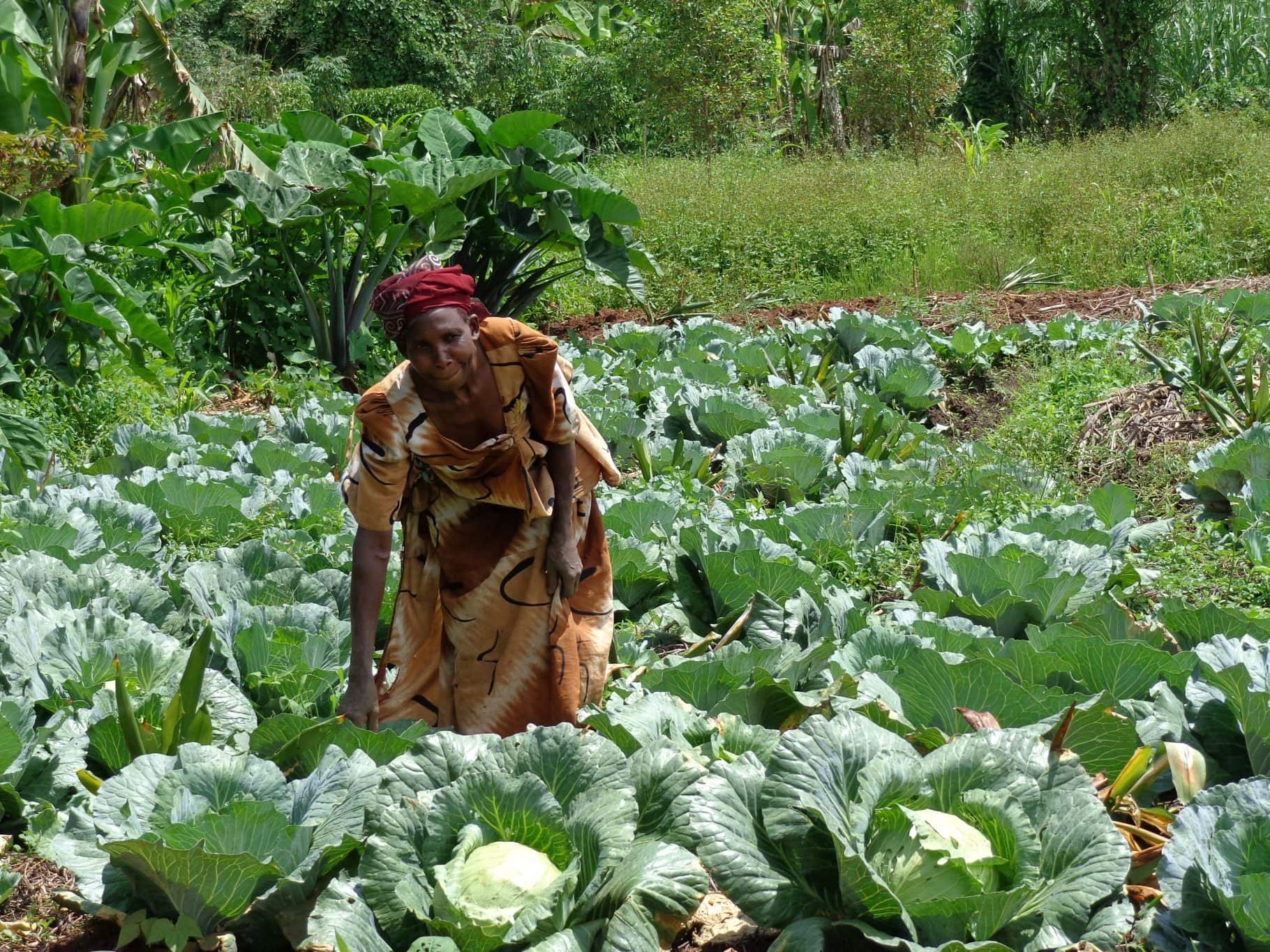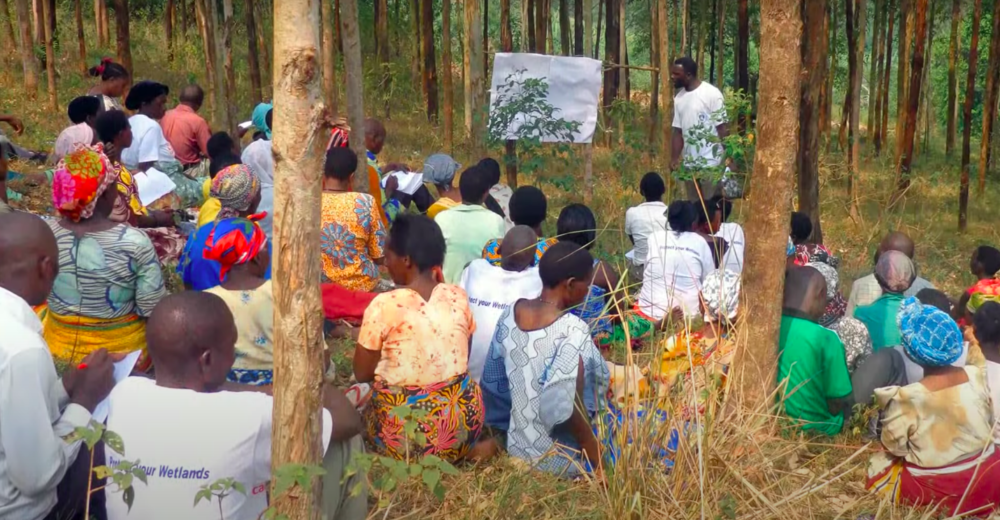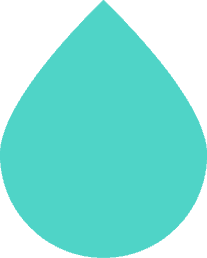Thinking with the landscape – the Rwambu integrated wetland, agriculture and WASH program, a micro catchment approach

The people of Rwambu, Uganda are challenged with declining water tables, loss of soil fertility and a degrading wetland ecosystem. Due to clearing of the hills for agricultural expansion soils on the steep slopes of the hills were exposed to torrential rainfall, leading to runoff and erosion. Encroachment of the Rwambu wetland caused extra drainage and a degraded ecosystem. As a result the water table retreated and people faced challenges with agricultural and domestic water. Women and children would walk two or more hours downhill to the wetland in the valley to access water. Farmers cultivating maize, beans, potatoes, bananas and coffee – the primary economic activity in the area – are challenged with crop failure.
The project was a pilot that aimed to provide practical lessons and documentation for the environmental sustainability component of the FIETS approach. It focused on the Rwambu area, on the border of Kamwenge and Ibanda districts in Western Uganda. It integrated WASH interventions with Soil and Water conservation through 3R and wetland management and a variety of water retention measures. The approach employed Catchment Based Water Resources Management to identify the links between upstream use and downstream impact. As reported in the project profile by Landscapes for People, Food and Nature: “Low-cost technologies, such as stone bunds, soil bunds, grass stripes, tree lines and check dams that were placed uphill helped curb the speed of surface water, giving water the time it needs to infiltrate into the soil and recharge the groundwater aquifers. The soil moisture increased, and crop yields significantly improved up to 40%. The uphill interventions also bore fruit downhill, recharging shallow wells with clean drinking water for downhill communities as well as reducing the siltation into the wetland. This brought more safe and adequate drinking water for downstream communities. “
A total of 2,700 benefited from the results of the project
The outcomes of WASH interventions exceeded expectations. Water is now retained in the landscape, and the water table is rising so that shallow wells are once again delivering water. The wetlands have been zoned, allowing community members to fetch water, feed cattle, catch fish and harvest medicinal plants and reeds at separated, best located places in the wetland. The pilot covered 800 metres of grass strips; 50,000 sq. metres of trees on top of the hill; 75,000 sq. metres of trees along the wetland; 10 percolation pits; 6 Km of earth bunds, 4 of which collect runoff from roads; 3 check dams each 12 metres long; 4 km of stone bunds. Local communities enjoy increased crop yield and they are glad to see the reappearance of a number of indigenous species around the wetland. This indicates that the services and values of the wetland are returning, and the wetland is recovering and growing which means increased capacity to filter and recharge the groundwater.




